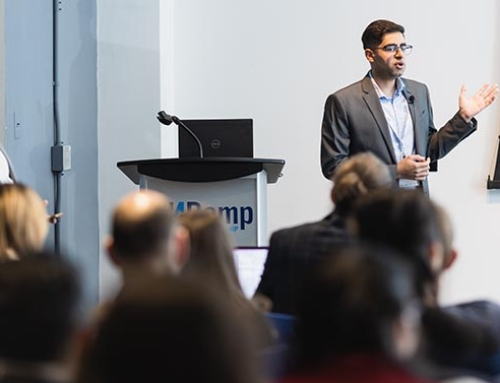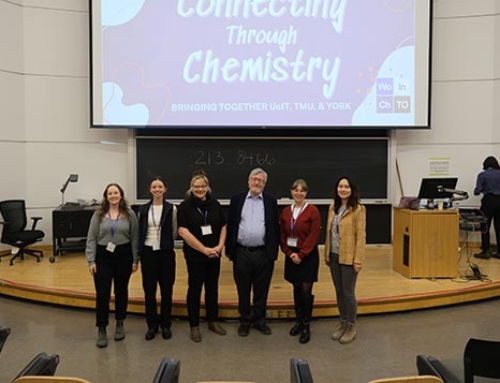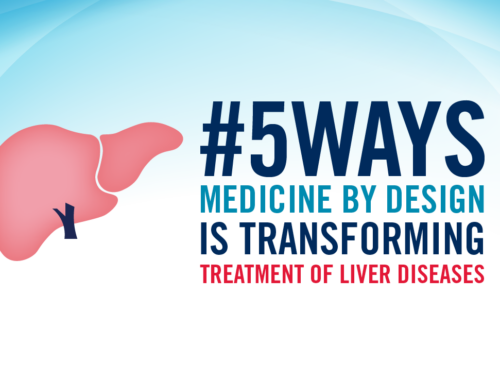
Carl E. James (left), professor, York University, and Istvan Mucsi (right), clinician investigator and nephrologist, University Health Network, will lead a Convergent Working Group focused on building trust and communication between the African, Caribbean and Black communities and regenerative medicine professionals. (Photos provided by York University and Istvan Mucsi)
The adoption of regenerative medicine — which harnesses the body’s ability to regenerate and repair using living therapies such as those made from stem cells — into widespread clinical use is immensely promising.
And for researchers Istvan Mucsi and Carl E. James, that promise can only be realized if regenerative medicine therapies are equally available to all populations.
Focusing on the African, Caribbean and Black (ACB) communities, Mucsi and James lead a Convergent Working Group that seeks to understand and overcome the potential barriers to the adoption of regenerative medicine in those communities. The first step is bringing a group of experts and community members together.
“In this collaboration, we focus building trusting relationships, mutual understanding and efficient communication between ACB communities and professionals in the field of regenerative medicine,” says James, a professor in the Faculty of Education at York University. He brings his expertise in equity and social justice to this partnership with Mucsi, a clinician investigator and transplant nephrologist at the Ajmera Transplant Centre, University Health Network (UHN), who has focused on reducing psychosocial and ethnocultural barriers to transplantation in his research.
Mucsi and James’s collaboration is one of seven recently funded Convergent Working Groups, a new initiative funded by Medicine by Design that will convene experts through a series of workshops to explore a range of ideas and possibilities related to regenerative medicine, aligning with Medicine by Design’s mission to harness Toronto’s extraordinary expertise across convergent disciplines and institutions to invent, develop, scale and implement living therapies for Canada and the world.
Collectively, the Convergent Working Groups will encompass community members and researchers from disciplines and institutions that may not typically be involved in regenerative medicine and that are new to Medicine by Design. Participants will span the public, private, government and non-profit sectors.
Michael Sefton, scientific director of Medicine by Design, says that this initiative was launched after the release of Medicine by Design’s strategic plan. Seven years after it was founded as the result of a transformative grant from the Canada First Research Excellence Fund (CFREF), Medicine by Design adopted a new strategic plan designed to build upon the CFREF investment and articulate Medicine by Design’s commitments to advance research and early-stage translation in regenerative medicine, enable the commercialization of living therapies at scale and prepare health systems, clinics and communities to implement living therapy innovations.
Convergence – the integration of approaches from engineering, science, medicine, the social sciences and other fields to expand knowledge and spark innovation – has always been Medicine by Design’s hallmark, but now, Sefton says, Medicine by Design is taking that idea further.
“We recognize that, in order to realize both the health and economic potential of regenerative medicine and ensure our vision of Toronto being a globally leading ecosystem for regenerative medicine innovation, we must look at the whole ecosystem. And that perspective means including policy experts, designers, the biotech industry, clinicians and patients and many more,” says Sefton. “Bringing in new partners and perspectives only strengthens research and translation because it means we’re considering issues like equity, system adoption and barriers to clinical translation at the earliest stages of therapeutics development.”
Allison Brown, executive director of Medicine by Design, says the Convergent Working Groups launch marks a new phase for Medicine by Design.
“In the past, we’ve seen our community as a hub for engineers, scientists and clinicians, but now we’re pushing the boundaries of what convergence means to us.”
Convergent Working Group to focus on trust and communication
Some of the barriers for the ACB community identified by James and Mucsi include a lack of access to treatments, less representation among regenerative medicine researchers and doctors and a lack of culturally appropriate information geared to individuals in the ACB community.
ACB community members and religious and spiritual leaders will join with regenerative medicine professionals and engineering, psychology, social sciences, arts, public health and information technology experts at upcoming workshops and forums. The discussions will centre around issues of trust and communication between the ACB community and the regenerative medicine research and clinical communities.
Eventually Mucsi and James aim to launch a larger project that includes developing culturally responsive informational resources about regenerative medicine and living therapies (including cell and organ transplant) for ACB communities, as well as a cultural safety training program for researchers and professionals in the regenerative medicine.
“The success of this project will promote trust and reduced racial bias and will be transferable to other healthcare areas,” says Mucsi, who is also an associate professor of medicine at U of T.
Convergent Working Group will confront the challenges of cutting-edge technologies

Mamatha Bhat, clinician-scientist and hepatologist at the University Health Network, leads a Convergent Working Group focused on RNA nanomedicine in regenerative medicine. (Photo provided by Mamatha Bhat)
One of the Convergent Working Groups will consider barriers to adoption of next-generation technologies, such as RNA nanomedicine, that have the potential to push the boundaries of what is possible in regenerative medicine.
Mamatha Bhat, a clinician-scientist and hepatologist at the Ajmera Transplant Centre at UHN, leads a working group focused on unleashing the potential of RNA to promote organ regeneration.
Bhat, who is also an assistant professor at U of T’s Department of Medicine’s Division of Gastroenterology, says solving RNA’s challenges so that it can be utilized as a localized therapy that can target organs and help them to regenerate would have a big impact on patients and healthcare.
“End-stage organ disease involving the liver, kidneys, heart or lungs impacts an estimated 4 million Canadians. This is an opportune time to exploit the growing expertise in RNA nanomedicine in Toronto and bring it to the bedside to stimulate regeneration in patients with chronic diseases.”
She adds, “Alongside the recent success in RNA nanomedicine, in particular the COVID-19 vaccine, there are nonetheless barriers to clinical translation of RNA nanomedicine across the spectrum of human disease.”
To be able to use nanomedicine as a regenerative medicine tool as successfully as we have been able to use it as a vaccine, Bhat says, several issues need to be addressed including improving targeting and reducing toxicity.
The workshop will be part of a larger initiative to bring together experts to discuss RNA nanomedicines in both regenerative medicine and cancer, and is also being supported by the Ontario Institute for Cancer Research (OICR) and the Slaight Breakthrough Forum with co-chairs Bowen Li (U of T), Hansen He (UHN) and Laszlo Radvanyi (OICR).
At an upcoming workshop, the RNA Convergent Working Group will bring together a mix of local as well as international pioneers in RNA nanomedicine, clinical regenerative medicine and artificial intelligence.
Other Convergent Working Groups funded by Medicine by Design
- Novel approaches for transplantation in patient-derived induced-pluripotent stem cells for cell regeneration (Co-funded by MITO2i), led by Ana Andreazza, professor, Faculty of Medicine, U of T
Mitochondria are parts of the cell responsible for generating energy. This Convergent Working Group will come together to discuss feasibly advancing mitochondria transplantation for successful applications in regenerative medicine. Mitochondrial dysfunction is involved in a variety of diseases, ranging from genetic mitochondrial disorders to chronic diseases such as diabetes, heart disease, and Alzheimer’s. Mitochondrial transplantation involves the addition of live and healthy mitochondria into the patient. The team will include researchers, clinicians, foundations, patients and patient families and industry partners all of which have a goal to advance mitochondrial related therapies to treat and cure disease. - A policy framework to enable the commercialization of living therapies, led by Shiri Breznitz, director of research and professor, Munk School of Global Affairs & Public Policy, U of T
Canada, especially the Greater Toronto Area, is one of the leading regions in living therapies research. However, policy to support the full-scale commercialization of these efforts is limited, which makes the translation pathway of collaborative teams, who are largely funded by provincial and federal agencies, unclear. This collaboration will bring together regenerative medicine researchers, clinicians, commercialization organizations, university and hospital administrators, institutional commercialization offices, and government representatives to discuss both the barriers for commercialization in Toronto, as well as to develop a policy framework to facilitate the commercialization of living therapies across Canada. - TOGETHER: Toronto Gene Therapy Network, led by James Dowling, senior scientist, Genetics & Genome Biology, The Hospital for Sick Children
As a key therapeutic strategy within regenerative medicine, gene therapies have potential to treat rare genetic diseases, which affect up to one in 12 Canadian families. This groups aims to make Toronto a world leading centre for rare disease gene therapy by identifying gaps and solutions to individualized gene therapy implementation, discussing equitable and ethical considerations, and determining optimal process and workflow from preclinical development through to clinical trials and ultimately, clinical implementation. - Electrical stimulation (ES) for neural repair, led by Cindi Morshead, professor and chair of the Division of Anatomy, Department of Surgery, U of T
Neurological disorders are a major cause of disability and affect millions of people worldwide, with increasing prevalence with aging. ES has received renewed attention as a potential strategy to treat neurological disease and injury. This collaboration considers how we can achieve the goal of leveraging ES to accelerate discovery and early-stage translation of engineered, customized living therapeutics to enhance neuroplasticity and regeneration. A team of experts from regenerative medicine, electrical engineering, material science, design and manufacturing alongside patient facing practitioners will consider minimally invasive, economically feasible, accessible and scalable technologies to advance the potential of ES. - Stem cell-based therapy: a novel regenerative medicine approach for neonates with necrotizing enterocolitis, led by Agostino Pierro, senior associate scientist and thoracic surgeon at The Hospital for Sick Children
This Convergent Working Group will focus on creating a platform for the future design, development and coordination of regenerative medicine clinical trials in critically ill newborns. Necrotizing enterocolitis (NEC), a serious disease of preterm babies in which the gut tissue becomes damaged and begins to die, will be considered as the use case. NEC often causes death or lifelong health issues. By bringing together stakeholders including neonatologists, pediatric surgeons, scientists, clinical trialists, ICU nurses, parents, clinical trainees, government representatives and industry partners, this collaboration aims to prepare the health system for the introduction of trials in newborns for diseases like NEC.






